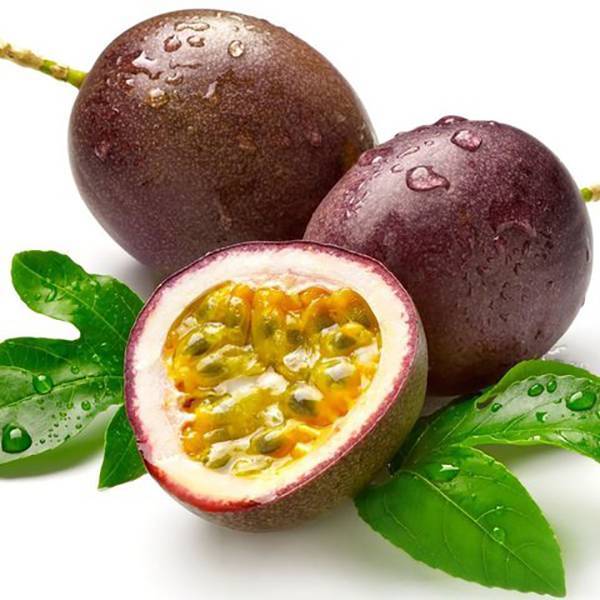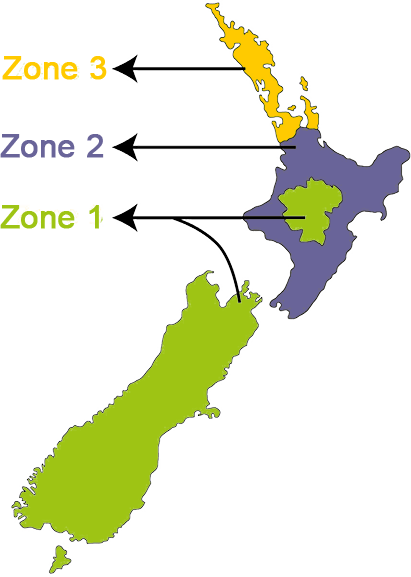
Growing Guide
Full sun. Protection from wind. Well drained soil.
2cm
200cm
200cm
250-300cm2
5cm
Transplant
21-28
365-550
Sow the seed into a container filled with seed-raising mix (available in bags from garden centres or hardware stores).
Seeds can be sown in a small (10cm) pot with one to two seeds per pot or into punnets.
Moisten the mix before sowing the seed.
Place the seed on the mix and lightly cover it with seed-raising mix.
After sowing, water pots with a seaweed solution (follow application rates on the container).
Prepare the planting area.
Soil should be weed-free and well dug through to at least a full spade’s depth.
Add well-rotted compost and peat if necessary and mix with surrounding garden soil.
Carefully remove passionfruit plant from container by turning upside down and holding the plant across the base of its stem with a spread hand.
Tap the bottom of the container until the plant and its root ball come loose.
Handle plants by the root ball to prevent damage to stems and shallow roots.
Place passionfruit plant in a hole that is just larger than the container it came in.
Backfill around root ball making sure there are no air pockets.
Water well and mulch with a finger-thick layer of peat, pine needles, shredded bark or untreated sawdust.
When the seedling is about 5cm high, water with liquid plant food.
Prepare the planting area.
Soil should be weed-free and well dug through to at least a full spade’s depth.
Add well-rotted compost and peat if necessary and mix with surrounding garden soil.
Carefully remove passionfruit plant from container by turning upside down and holding the plant across the base of its stem with a spread hand.
If planting in a container ensure it is large enough.
Half barrels and wide-rimmed terracotta or glazed pots all look good with passionfruit.
Use a rich compost with plenty of organic material and a layer of drainage material beneath it.
Add slow-release granules or sheep pellets before planting.
When passionfruit are grown in containers it pays to put them where you can easily monitor them to ensure soil is moist – particularly in dry weather.
Plants are often placed against a wall with trellis on it to which they can be attached or with a metal training pyramid or cylinder standing above the pot.
Fruit ripen in summer and autumn and sometimes this goes into winter depending on the variety.
Passionfruit are ready when they have turned from green to a dark brownish-purple or orangey-yellow – depending on the variety.
Skin can start to shrivel slightly and appear furrowed.
Fruit fall when ripe but it's best if you pick them individually by hand from the vine.
Snip them off with a short length of the stem.
Keep a few seeds from a large tasty passionfruit.
Gently wash the seed clean removing the pulp then allow it to dry on a paper towel.
Fresh seed is more viable (that is more likely to grow) than older seed.
Soak the seeds in warm water.
Seeds are best planted in spring or early summer as soon as they are available.
If seed has to be stored keep it in a labeled envelop in an airtight container.

Zone 1 - Cool
Zone 2 - Temperate
Zone 3 - Subtropical